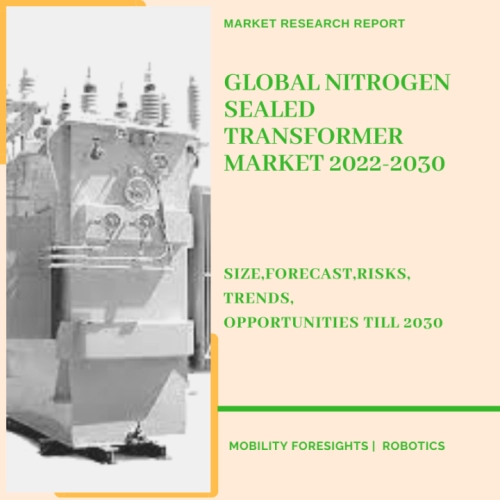
- Get in Touch with Us

Last Updated: Apr 25, 2025 | Study Period: 2022-2030
Using nitrogen gas to replace oxygen from the fire source, a nitrogen fire fighting system for power transformers can put out a fire by suppressing its essential components.
Nitrogen gas is a great material to utilise in a nitrogen purging system for transformers because of its inert nature and lightweight physical characteristics (it is both lighter and less dense than air). Furthermore, unlike CO2, which is known to produce greenhouse gases, nitrogen is an environmentally beneficial gas.
A Nitrogen Injection Fire Prevention System (NIFPS) is a dual-action fire safety system that, in the event of a rupture, activates valves that open to drain oil out of the transformer tank while also injecting nitrogen gas into the tank to displace oxygen using a sequence of electromechanical signals.

The Global nitrogen sealed transformer market accounted for $XX Billion in 2021 and is anticipated to reach $XX Billion by 2030, registering a CAGR of XX% from 2022 to 2030.
An enhanced line of three-phase encased transformers for tough environments and industrial settings has been introduced by Hammond Power Solutions, a producer of dry-type transformers and magnetics.
The HPS Titan N transformer is totally enclosed in epoxy and gas-sealed with nitrogen, protecting it from airborne pollutants and preventing moisture intrusion.
The manufacturer claims that improved electrical performance, such as 10kV BIL, less inrush current, and better impedance, can increase safety and reduce equipment damage.
This transformer can be used for a variety of applications thanks to improved thermal performance and a wide range of temperature classes.
A front entry, a removable hinged door, a textured powder coating, and both wall and floor mount on some kVAs are among the improvements included in the new enclosure design.
| Sl no | Topic |
| 1 | Market Segmentation |
| 2 | Scope of the report |
| 3 | Abbreviations |
| 4 | Research Methodology |
| 5 | Executive Summary |
| 6 | Introduction |
| 7 | Insights from Industry stakeholders |
| 8 | Cost breakdown of Product by sub-components and average profit margin |
| 9 | Disruptive innovation in the Industry |
| 10 | Technology trends in the Industry |
| 11 | Consumer trends in the industry |
| 12 | Recent Production Milestones |
| 13 | Component Manufacturing in US, EU and China |
| 14 | COVID-19 impact on overall market |
| 15 | COVID-19 impact on Production of components |
| 16 | COVID-19 impact on Point of sale |
| 17 | Market Segmentation, Dynamics and Forecast by Geography, 2022-2030 |
| 18 | Market Segmentation, Dynamics and Forecast by Product Type, 2022-2030 |
| 19 | Market Segmentation, Dynamics and Forecast by Application, 2022-2030 |
| 20 | Market Segmentation, Dynamics and Forecast by End use, 2022-2030 |
| 21 | Product installation rate by OEM, 2022 |
| 22 | Incline/Decline in Average B-2-B selling price in past 5 years |
| 23 | Competition from substitute products |
| 24 | Gross margin and average profitability of suppliers |
| 25 | New product development in past 12 months |
| 26 | M&A in past 12 months |
| 27 | Growth strategy of leading players |
| 28 | Market share of vendors, 2022 |
| 29 | Company Profiles |
| 30 | Unmet needs and opportunity for new suppliers |
| 31 | Conclusion |
| 32 | Appendix |